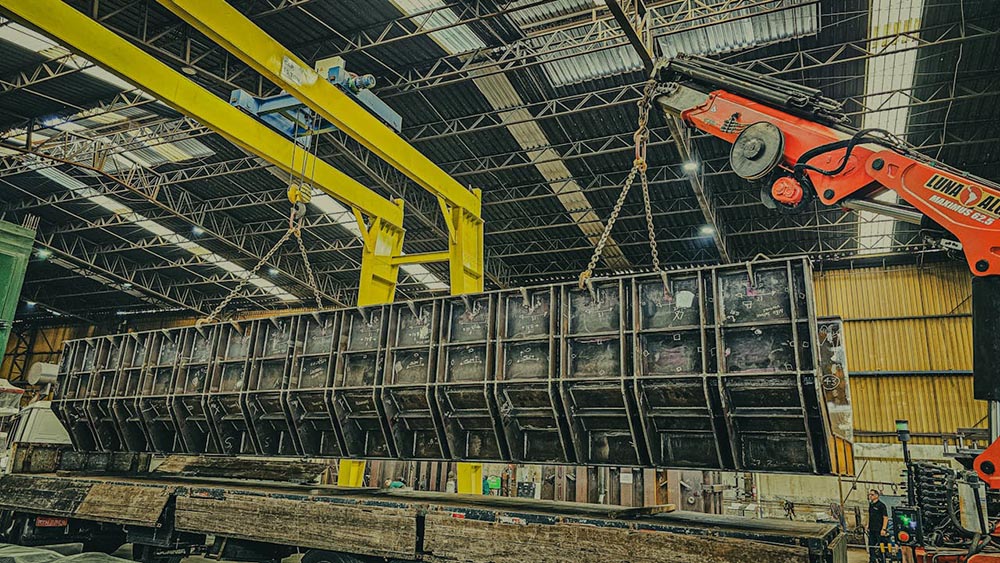In the dynamic realm of the rigging industry, where precision and safety are paramount, the significance of reliable hoisting equipment cannot be overstated. This article delves into the world of industrial lifts, exploring the diverse types of hoists, their applications, and the advantages they bring to material handling and workplace productivity.
Understanding Hoists in the Rigging Industry
In the rigging industry, a hoist is essential lifting equipment that enables workers to move heavy loads vertically. Whether electric or manual, these devices are critical for safe and efficient operations, playing a vital role in various industrial settings and construction sites where lifting capabilities are essential.
Types of Hoists
Hoisting equipment comes in various forms. Some common types and their applications are summarized below, with others like jib cranes and gantry cranes also available. These tools improve efficiency in various settings.
| Equipment Type | Typical Application |
| Chain Hoists | Moving bulky items in a warehouse |
| Wire Rope Hoists | Assisting with installation in a manufacturing facility |
Applications of Hoists
Hoists are incredibly versatile and find applications across numerous industries. From manufacturing and construction to warehousing and logistics, they are used to lift, lower, and position heavy loads with precision. The ability to easily move heavy materials enhances productivity and safety in a wide range of industrial settings that require crane systems.
Benefits of Using Hoists
The advantages of using hoists are manifold. In particular, they offer several key benefits:
- They increase productivity.
- They reduce the risk of injury.
- They improve overall operational efficiency.
With enhanced lifting capabilities, workers can handle heavy loads safely and quickly, making hoists an indispensable asset in any workstation and an essential part of material handling.
Electric and Manual Hoists: A Comparison
When selecting a hoist, a key decision involves choosing between electric and manual models. Both types have their strengths and weaknesses, making the choice dependent on the specific needs and constraints of the application. Understanding their differences is crucial for optimizing efficiency and safety in the workplace.
Electric Hoists: Efficiency and Safety
Electric hoists are powerhouses of efficiency, providing smooth and consistent lifting with minimal manual effort. Their speed and precision make them ideal for high-volume operations in manufacturing, where time is of the essence. Installation is straightforward, and safety features enhance workplace protection when dealing with heavy loads.
Manual Hoists: Cost-Effectiveness and Control
Manual hoists offer a cost-effective solution for applications where power is unavailable or infrequent lifting is required. They provide precise control over the load, making them suitable for delicate operations. Though they require more physical exertion, manual hoists can be a versatile option for situations where portability and affordability are paramount, with crane specialists available for consultation.
Choosing Between Electric and Manual Hoists
The decision between electric and manual hoists hinges on factors like the frequency of use, load capacity, budget, and available power. Electric hoists are best for high-volume, heavy lifting, while manual hoists are suitable for light to medium loads where cost-effectiveness and portability are more important. Both can be part of overhead crane or workstation crane systems, offering versatile crane solutions.
Crane Systems: Versatile Solutions for Heavy Lifting
Crane systems represent a significant advancement in material handling, offering comprehensive solutions for lifting heavy loads in a variety of industrial settings. Ranging from simple jib crane setups to complex gantry crane configurations, these systems greatly enhance workplace productivity, ensuring safe and efficient movement of materials. These are often used in industrial settings.
Types of Crane Systems
Crane systems are diverse, tailored to different lifting requirements. They enhance efficiency in manufacturing and warehouse settings. Some systems offer broad coverage, while others focus on specific areas.
| Crane System Type | Coverage Area |
| Overhead Crane Systems | Large areas within a facility |
| Workstation Crane Systems | Localized areas |
Jib Cranes: Functionality and Applications
Jib cranes are versatile lifting equipment, often used in workstations to provide localized lifting capabilities. They consist of a horizontal beam, known as a jib, which supports a hoist and trolley. These cranes are perfect for lifting heavy loads within a specific radius, commonly found in manufacturing facilities and warehouses where focused lifting is essential for optimizing material handling.
Gantry Cranes: Design and Use Cases
Gantry cranes are characterized by their ability to move heavy loads along a horizontal beam supported by legs, creating a gantry structure. These cranes are ideal for outdoor applications or indoor settings where overhead crane installation is impractical. Their high lifting capacity makes them a preferred choice for industries such as construction, and can move heavy things in a warehouse or industrial stations.
Wire Rope Hoists vs Chain Hoists
When selecting a hoist, it’s essential to consider the type of lifting application. Wire rope hoists and chain hoists both offer unique advantages in terms of lifting capabilities, durability, and versatility, which can improve speed and productivity. Understanding their differences ensures you choose the right tool for your specific material handling needs.
Wire Rope Hoists: Strength and Durability
Wire rope hoists are renowned for their strength and durability, making them suitable for lifting heavy loads in demanding industrial settings. The wire rope design provides exceptional lifting capabilities, with a smooth lifting action, which makes the electric hoist an excellent choice for applications requiring precision and reliability. Crane specialists can help determine which wire rope hoist fits your needs.
Chain Hoists: Flexibility and Portability
Chain hoists offer enhanced flexibility and portability compared to wire rope hoists. Their compact design and lighter weight make them easier to transport and install in various workstation locations. These manual hoist options are particularly advantageous in situations where space is limited or frequent relocation is necessary. These can increase the rate of material handling.
Selecting the Right Hoist for Your Needs
Choosing the right hoist depends on several factors, including the weight and dimensions of the load, the frequency of lifting, and the environment in which the hoist will operate. Consideration should be given to whether an electric hoist or manual hoist best suits the application, taking into account factors like speed, lifting capacity, and budget, for any workstation crane systems. They are versatile and have many advantages.
Workstation Cranes: Enhancing Efficiency on the Construction Site
Design Features of Workstation Cranes
Workstation crane systems are designed to offer maximum flexibility and efficiency in localized lifting areas. Typically, these systems incorporate lightweight materials, such as aluminum or high-strength steel, to facilitate easy movement and positioning. The design often includes enclosed overhead rails and trolleys that allow for smooth and effortless movement of heavy loads, enhancing workplace productivity and speed. These systems often improve crane solutions.
Benefits of Workstation Cranes in Industrial Settings
The implementation of workstation cranes in industrial settings brings numerous advantages, including improved material handling, enhanced worker safety, and increased rate of production. By providing ergonomic lifting solutions, workstation cranes reduce the physical strain on workers, minimizing the risk of injuries. This leads to a more efficient and productive workforce, with crane specialists ensuring optimal performance.
Implementing Workstation Cranes in Your Operations
Implementing workstation cranes involves a detailed assessment of the lifting requirements and the specific layout of the workstation. Consulting with crane specialists to determine the appropriate type of crane, lifting capacity, and installation requirements is crucial. Proper installation ensures that the workstation crane operates safely and efficiently, maximizing its benefits for material handling and overall industrial productivity, lifting heavy and bulky loads.
Classification and Standards in Hoisting Equipment
Understanding Hoisting Equipment Classifications
Hoisting equipment is classified based on several factors, including lifting capacity, duty cycle, and the type of load it is designed to handle. Understanding these classifications is essential for selecting the right hoisting equipment for a specific application. For example, heavy-duty hoists are designed for frequent lifting of heavy loads in demanding industrial settings, while light-duty hoists are suitable for infrequent lifting of lighter loads, making it a versatile product.
Industry Regulations and Compliance
The hoisting equipment industry is governed by strict regulations and standards aimed at ensuring safety and preventing accidents. Compliance with these regulations is essential for all crane systems, protecting workers and equipment. Regular inspections and maintenance are required to maintain compliance and ensure the safe operation of hoisting equipment in any workplace.
Safety Standards for Hoisting Operations
Safety is paramount in all hoisting operations. Establishing and enforcing rigorous safety standards is essential to prevent accidents and injuries. These standards include proper training for operators, regular equipment inspections, and the use of appropriate safety gear. By adhering to these safety standards, companies can create a safe working environment and minimize the risk of accidents involving hoisting equipment, with crane solutions improving the speed and overall rate.
##





